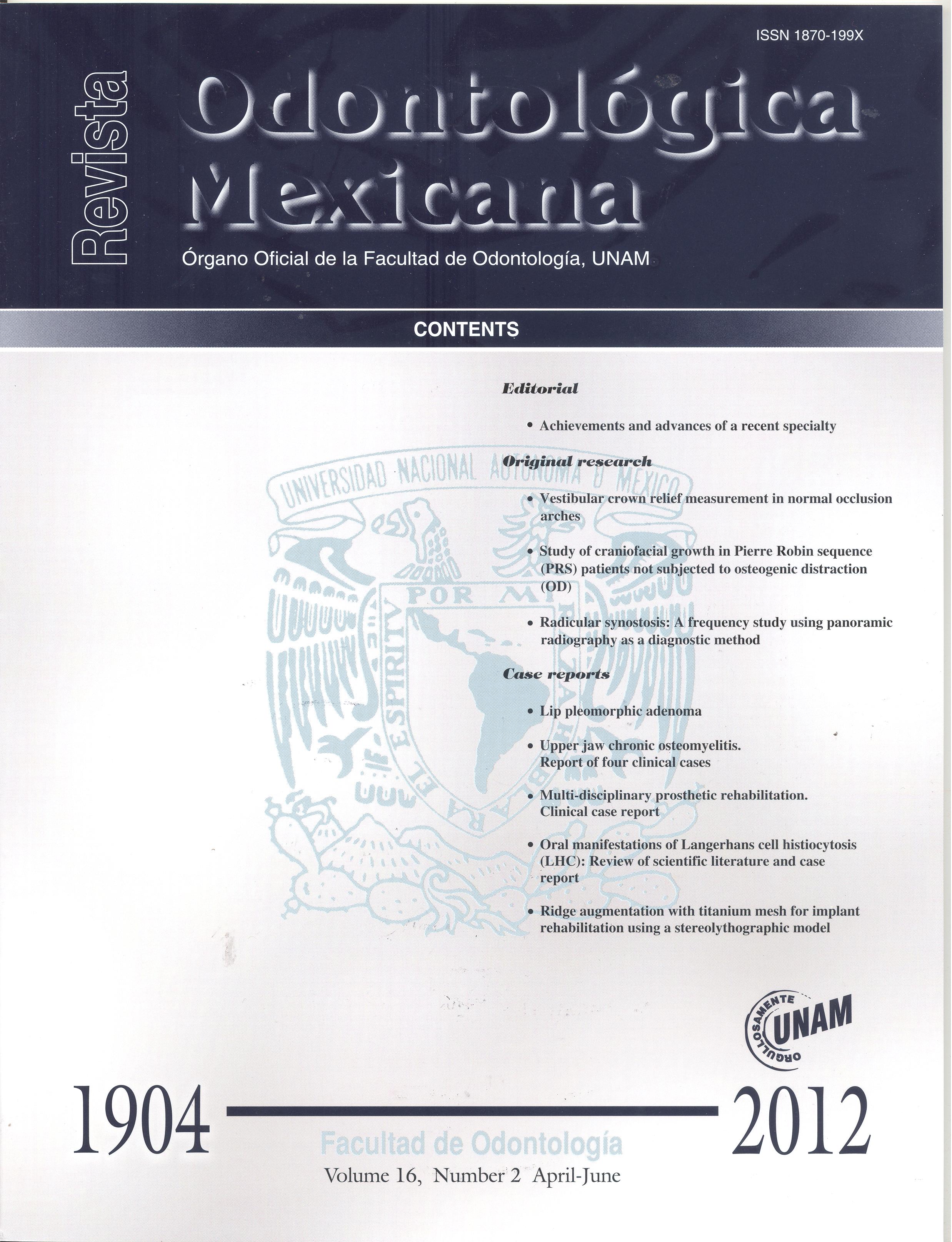Ridge augmentation with titanium mesh for implant rehabilitation using a stereolythographic model
Contenido principal del artículo
Resumen
Adequate amount of alveolar bone is critical for achieving functional prosthetic rehabilitation with adequate aesthetics and biomechanical support. Several techniques have been developed for osseous reconstruction in atrophic upper and lower jaws. Ridge augmentation is an accepted successful method used in dental practice to increase bone volume in sites chosen for dental implant placement. Titanium mesh have been used for reconstruction of small and large defects as a method of containing graft particles.
Case report: A case of a patient with severe bilateral resorption in the posterior area of the mandible is presented. Based on the CT scan, a stereolithographic model was obtained; Ridge augmentation procedure was performed with placement of two pre-shaped titanium mesh and a combination of xenograft, allograft, autograft as well factors rich in plasma. After 3 and a half months, both mesh were removed. An approximately 3 mm gain in ridge width was obtained making it possible to place and rehabilitate implants.
Conclusion: The use of titanium mesh is an excellent alternative to increase bone width in atrophic jaws, thus enabling the patient to receive dental implant treatment.
Detalles del artículo
Citas en Dimensions Service

Revista Odontológica Mexicana por Universidad Nacional Autónoma de México se distribuye bajo una Licencia Creative Commons Atribución-NoComercial-SinDerivar 4.0 Internacional.
Basada en una obra en http://revistas.unam.mx/index.php/rom.
